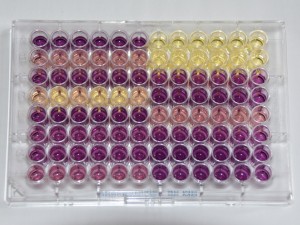A certain biological activity is best triggered by a very specific chemical structure, but the total activity of a plant cell is determined by the combination of compounds with varying activities and concentrations
 The study of tannin bioactivities and structure-activity relationships is a really fascinating area of research. As soon as we find a mechanism by which plants might be defended against insect herbivores, we naturally want to understand what types of compounds are the most active ones by this mechanism as anti-herbivore agents. Alternatively, tannins may also be beneficial plant components, especially for humans and ruminants. To fully utilize this information, we need to isolate, purify and characterize a large set of tannins to be tested e.g. for their anti-methanogen activities.
The study of tannin bioactivities and structure-activity relationships is a really fascinating area of research. As soon as we find a mechanism by which plants might be defended against insect herbivores, we naturally want to understand what types of compounds are the most active ones by this mechanism as anti-herbivore agents. Alternatively, tannins may also be beneficial plant components, especially for humans and ruminants. To fully utilize this information, we need to isolate, purify and characterize a large set of tannins to be tested e.g. for their anti-methanogen activities.
At its best, these structure-activity comparisons enable us to predict the activities of yet non-studied compounds directly on the basis of their structural features. Combined with compound-specific quantitation methods, this should enable us to find out the most potently active plant species without the need to isolate and separately test all of their metabolites for bioactivities. However, by doing this we should always remember that in vitro and in vivo activities might be two totally separate issues. Therefore in vitro activities should always be treated with a touch of caution. Finally, some thoughts should be given to the in vivo activities of the polyphenol metabolites as well, since in many cases the materialized activities are due to metabolites rather than the original polyphenol tested in the in vitro trials.
Our flag publications in this area are the two “classical” papers of tannins’ pro-oxidant activity:
